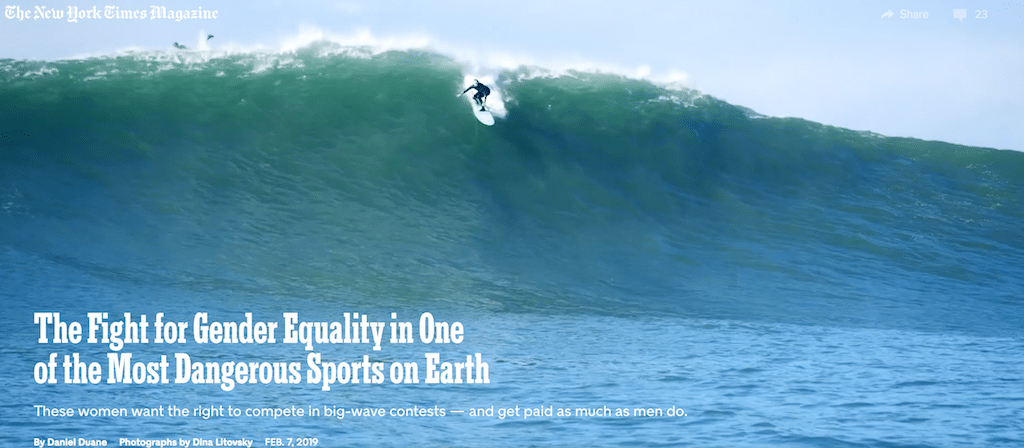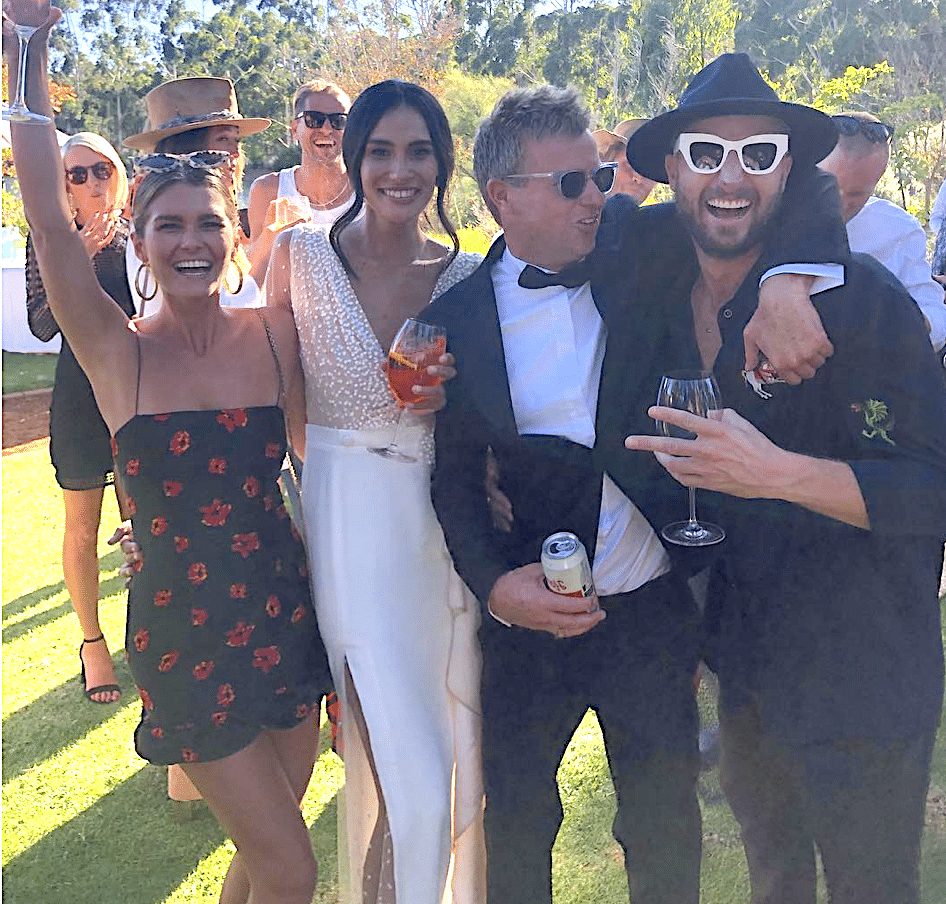Jen See takes on the story everyone's talking about!
This morning I rode my Schwinn to the coffee shop with The New York Times Magazine clutched under my arm. Almost immediately it began to rain, so there I was carrying a paper magazine in the rain. This was not good planning. There is, it seems, something to be said for carrying a 10 thousand word feature in a glowing metal and glass box tucked safely into your pocket.
I arrived to a packed scene and sardined my way to the counter to order. After scavenging a chair, I tucked under the awning with my macchiato to read this week’s cover story, Daniel Duane’s delicious feature on women’s big wave surfing.
They had me at the subhead, which calls big-wave surfing “one of the most dangerous, rapturous sports on Earth.” I’m not sure this is true, never having experienced it myself, but it would have lured me straight into reading the story — even if I hadn’t already heard talk of some pure fire interview quotes from the women involved.
At length and in full-dress New York Times Magazine feature style, Duane traces the efforts of women such as Bianca Valenti and Keala Kennelly to gain admittance to the big wave boys club. This is a story that’s been begging to be told. It has all the best ingredients: colorful characters, nature at its most wild and unpredictable, a near-constant risk of death, and maybe best of all, men behaving badly.
The story’s sympathies are clear. The women come off as uniformly badass and determined. Valenti describes riding a wave at Jaws as feeling as one of “peacefulness” as though “this is where I was meant to be.” If you’ve wondered what compels surfers to throw themselves down mountains of water, Duane does as good work as anyone has at illuminating the seductive draw of big waves to those who chase them.
The juice of the story is the resistance that women have encountered in gaining access to big wave lineups, contests, and prize money. Here, the surf industry and the assorted contest organizers, from Jeff Clark at Mavericks to the WSL, do not come off especially well. The sexism appears to run deeply and Duane does not pull his punches. Men appear largely dismissive of women’s abilities and view them as rivals for prize money at best and as dangers in the lineup at worst.
Kennelly’s outspoken comments, in particular, had me cackling out loud. She describes the surf industry as she found it in the early 2000’s, when she was surfing on the CT, as teeming with “creepy team managers.” There’s more, and the story is worth reading for Kennelly’s unflinching excoriation of the surf industry as she experienced it. Duane shows the price she paid for the industry’s close-mindedness at the time as sponsors dropped her and she struggled to find support.
The WSL and their much-ballyhooed equal prize money initiative also fall short of the mark in this account. Some of this ground is familiar as Duane retraces the reporting of the San Jose Mercury News on Goldschmidt’s description of the women’s “poor performance” and abuse of #metoo. When placed in the context of the longer story, the WSL looks a lot more like an continuation of surfing’s old order than the fabulously shiny, new thing they like to portray themselves as.
Duane’s given us an inspiring story of guts and glory, the kind of thing that’s perfect for a rainy Sunday morning. Here’s a group of women, who didn’t fit within the narrow boundaries that the surf industry, or the wider culture for that matter, wanted to draw for them. So they set out to obliterate those boundaries. Duane, rightly I think, gives Kennelly the kicker. I’m not going to spoil it, except to say that it’s worth reading all the way to the end.







